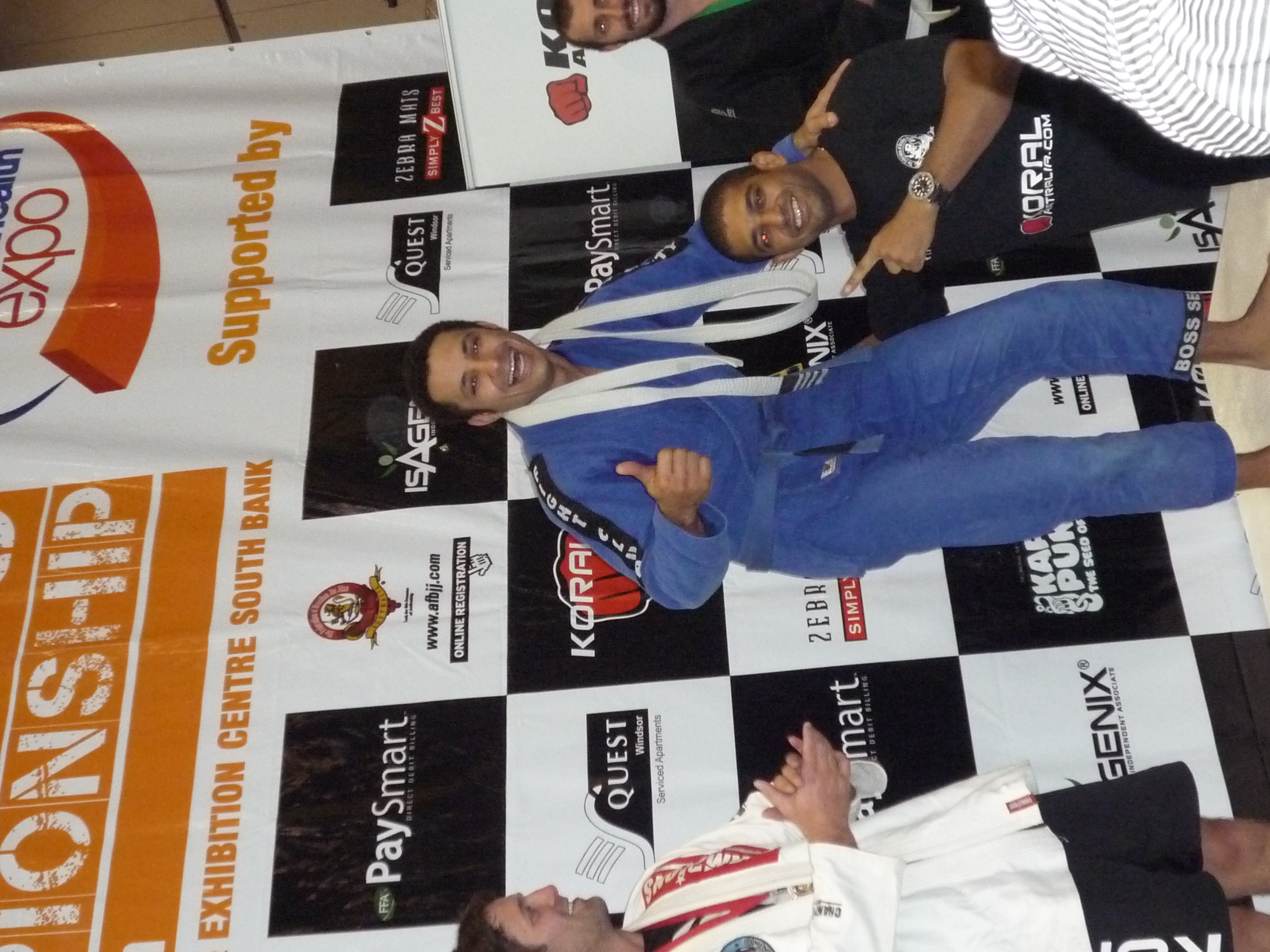I am a regular person and achieved my BJJ black belt in under eight years of training
By Leonardo Correa
Jan 01, 2024 - (7 min read)
I am a regular person and achieved my BJJ black belt in under eight years of training, starting when I was almost 32. This is noteworthy given the challenges that come with age, family responsibilities, and potential injuries. Fortunately, I managed to avoid significant injuries throughout my journey.
I received my black belt from Vicente Cavalcante in Nov/2023. I'll tell you about my journey and what made me achieve this level faster than an average person.
Disclosure:
The 8 years exclude:
- over six months traveling the world in 2014.
- the two years of COVID lockdown. My family and I spent almost two years in lockdown.
My BJJ history
I started training in late September 2013 in Melbourne with Alex Santos (ASBJJ).
I was promoted to blue belt in April/2014 (after 6 months as a white belt). A week after my promotion, My partner and I traveled the world for 7 months. It was a well-worth time to put my training on hold.
[pics]
During my blue belt time, I was mainly focused on trying all possible guards. It was a time to sample everything, just like we do on buffet lunches. I even entered several competitions with specific strategies to apply a guard I was working on. In 2017, I entered several NOGI Grappling competitions. It was the early stages of leglocks. My gym prohibited all leg locks. I had to cross-train with 10th planet South Melbourne to be able to learn and train leg attacks.
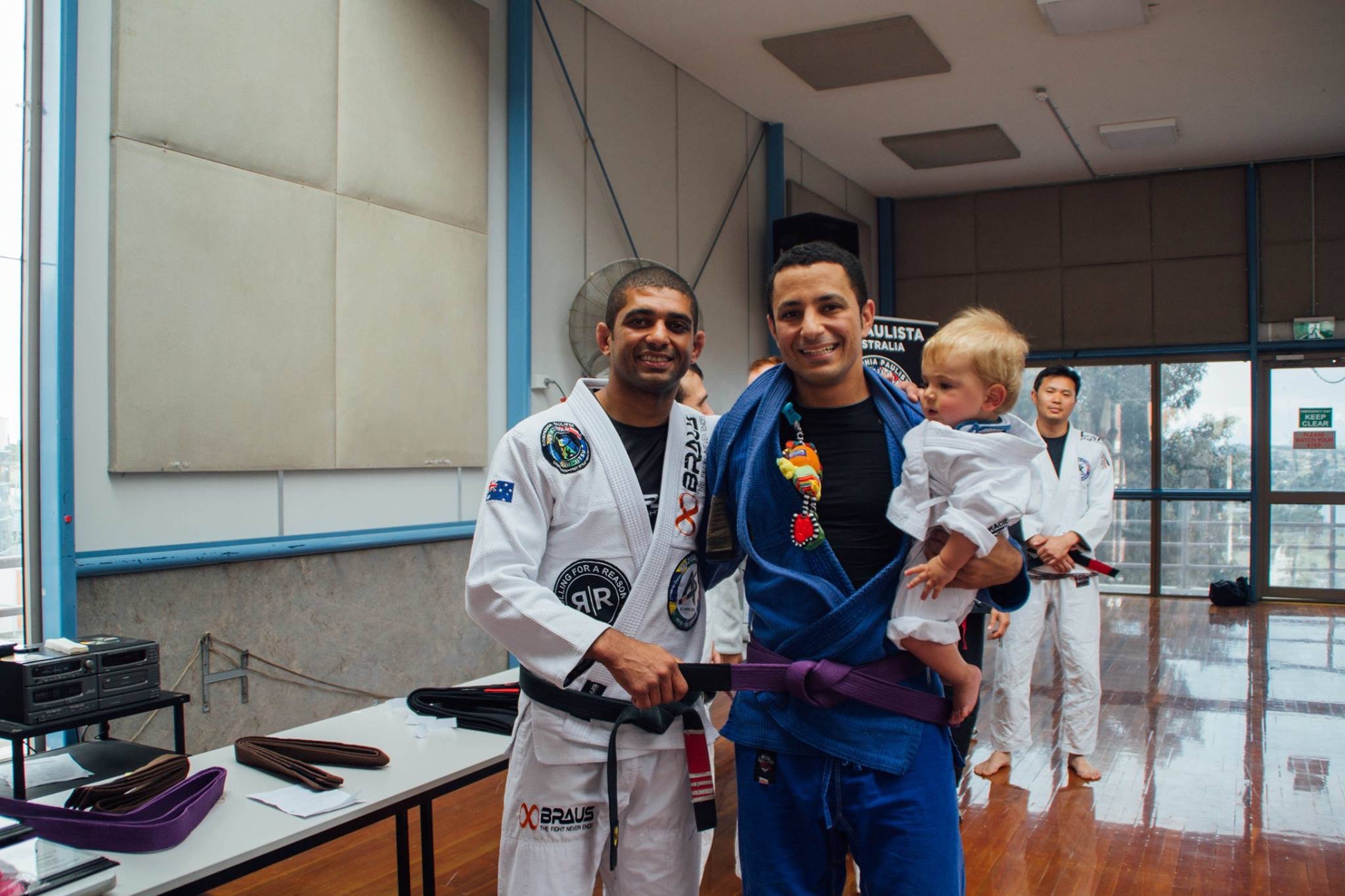
I was promoted to purple belt in Dez/2016. I wasn't sure what to do as a purple belt. No one tells you anything. Late on my purple belt journey, I realized that it was time to remove all the techniques I've collected and focus on the ones that worked for me. It was a time for my game plan evolution and revolution. I constructed my game based on my favorite techniques: Lasso guard, triangle, and DLR.
I practiced these techniques and variations in live sparring for ages. I did no-resistance drills too but most of my practice was in live sparring with lower belts. I tried my game plan on local competitions. It felt so nice to nice to not have to think of the technique and have them automatically flowing.
In Sep/2019, it was time to take my jiu-jitsu to the highest level for a regular amateur practitioner: The IBJJF Worlds Masters in Las Vegas.
I entered a division with 59 people. I had 6 matches including the final. Unfortunately, I didn't the gold. I entered the open weight division, being the lightest person on the bracket. I reached the final. I lost again but now by split decision. I was still pretty happy with the 9 fights in one day at the highest level, double silver, and a brown belt promotion.
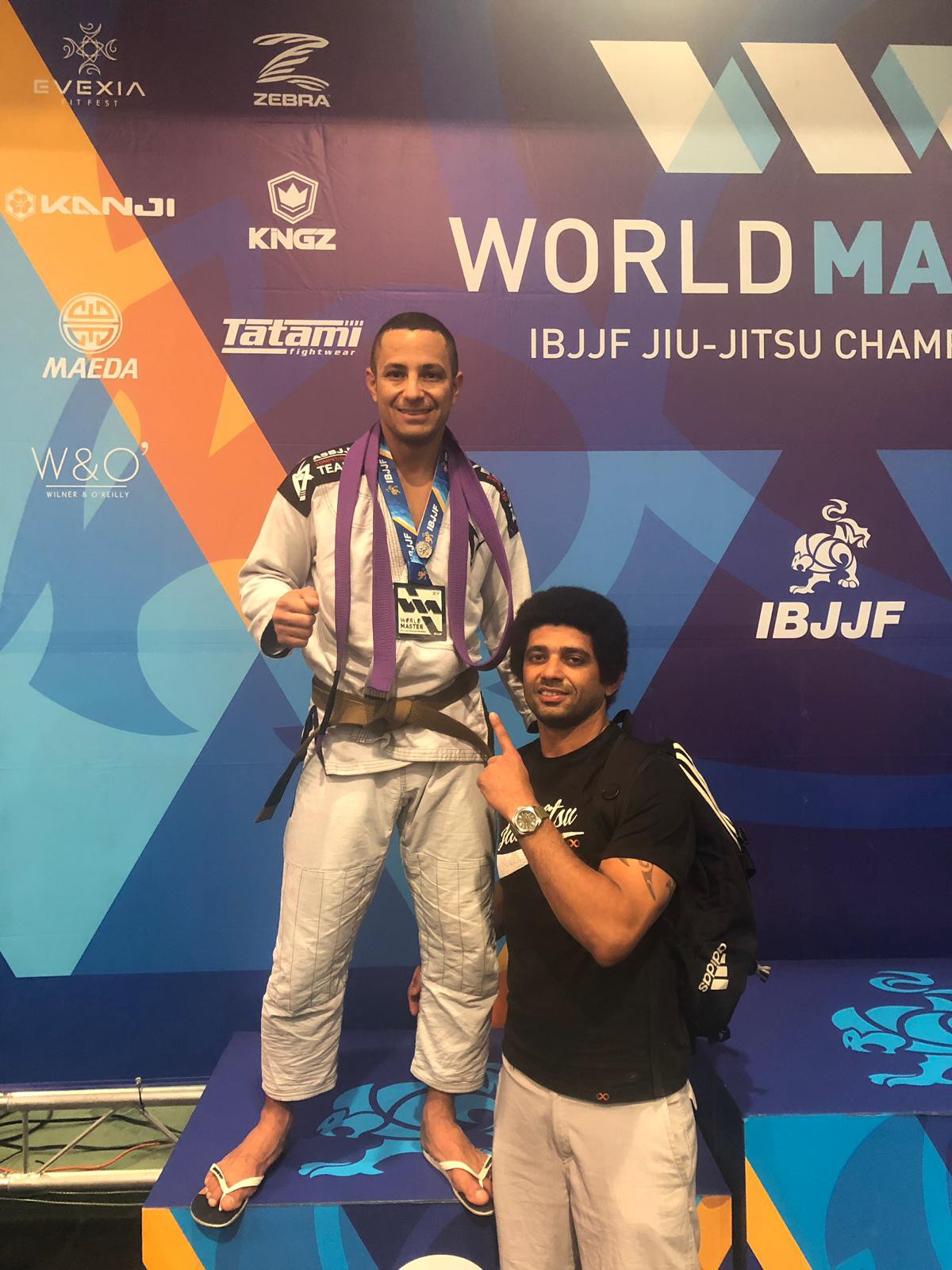
At Brown belt, I had a chance to compete less than a week after I arrived from Las Vegas. I also filled in for an injured competitor at an invitation event called Iron Brown just about three weeks after I received my brown belt.
Pandemic I spent the whole 2020 and 2021 at home in Melbourne COVID lockdowns.
I returned again to train BJJ in Gold Coast in March/2022. It took me about a while to fall in love with BJJ again. I found in the NOGI my motivation to train again. I still did GI about 50% of the time.
When I visited Brazil in November 2022, I trained mostly Luta-livre. This is a Brazilian style of submission wrestling. After weeks of commitment and hard work, I was promoted to purple belt in Luta-livre by Viktor Ninja, Vemcer Project, Rio de Janeiro. I am very thankful to represent BJJ and Luta-livre.
Now the greatest moment, the time we dream of when I wear that white belt for the first time. In Nov/2023, in less than 8 years of continuous BJJ training, I received my black belt from Vicente Cavalcanti.
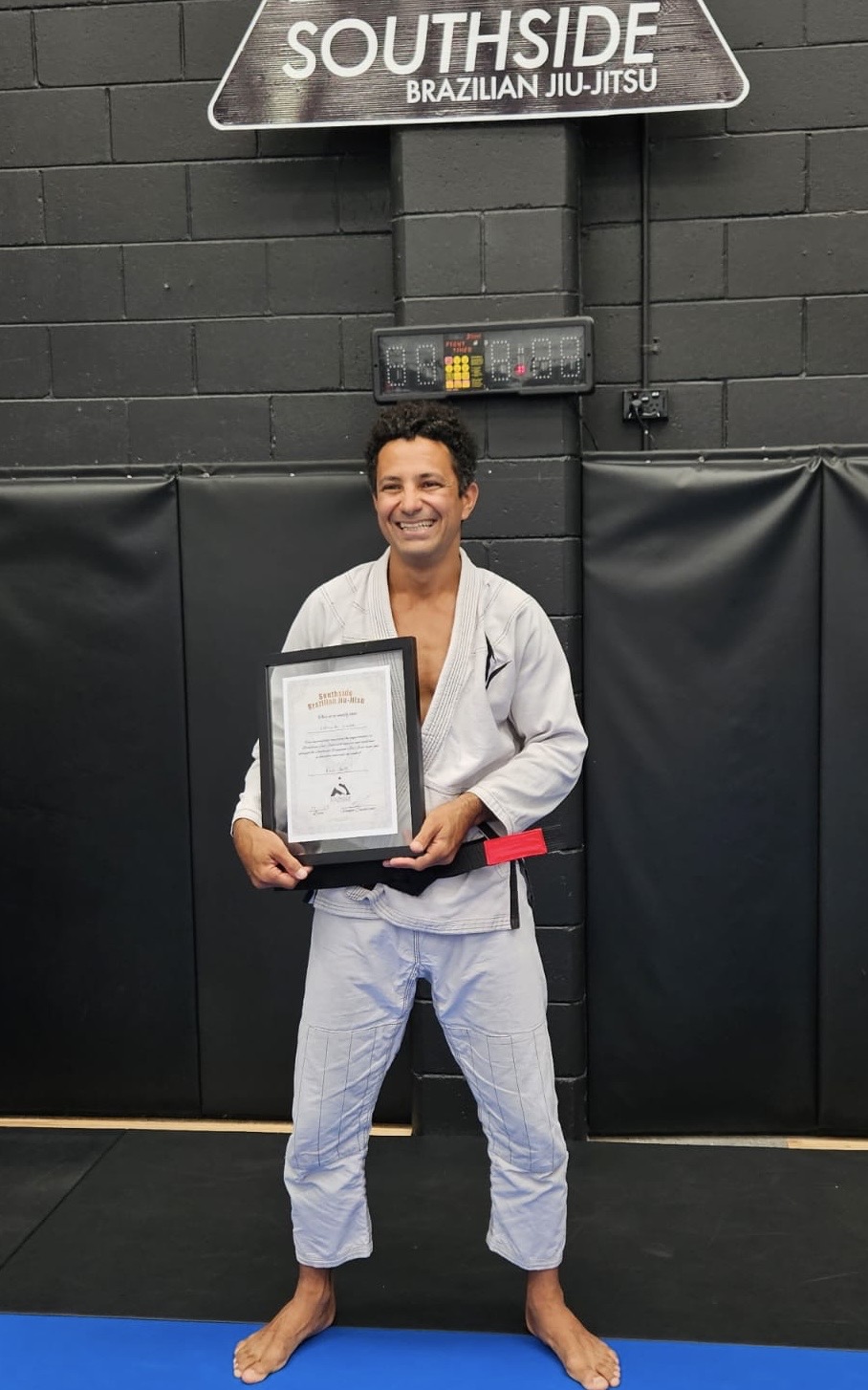
Factors Contributing to Fast Progress:
Transferable training experience from soccer
As soon as I started BJJ, I noticed something wrong with the classes. Instructors would show the correct technique. We were not allowed to make any variation. Everything had to be done the prescribed way.
Leveraging my soccer background, I introduced variations into training, focusing on specific training and repetition without repetition, always with live resistance.
Competition
Regular competition accelerated my development. I actively competed, sometimes multiple times a month.
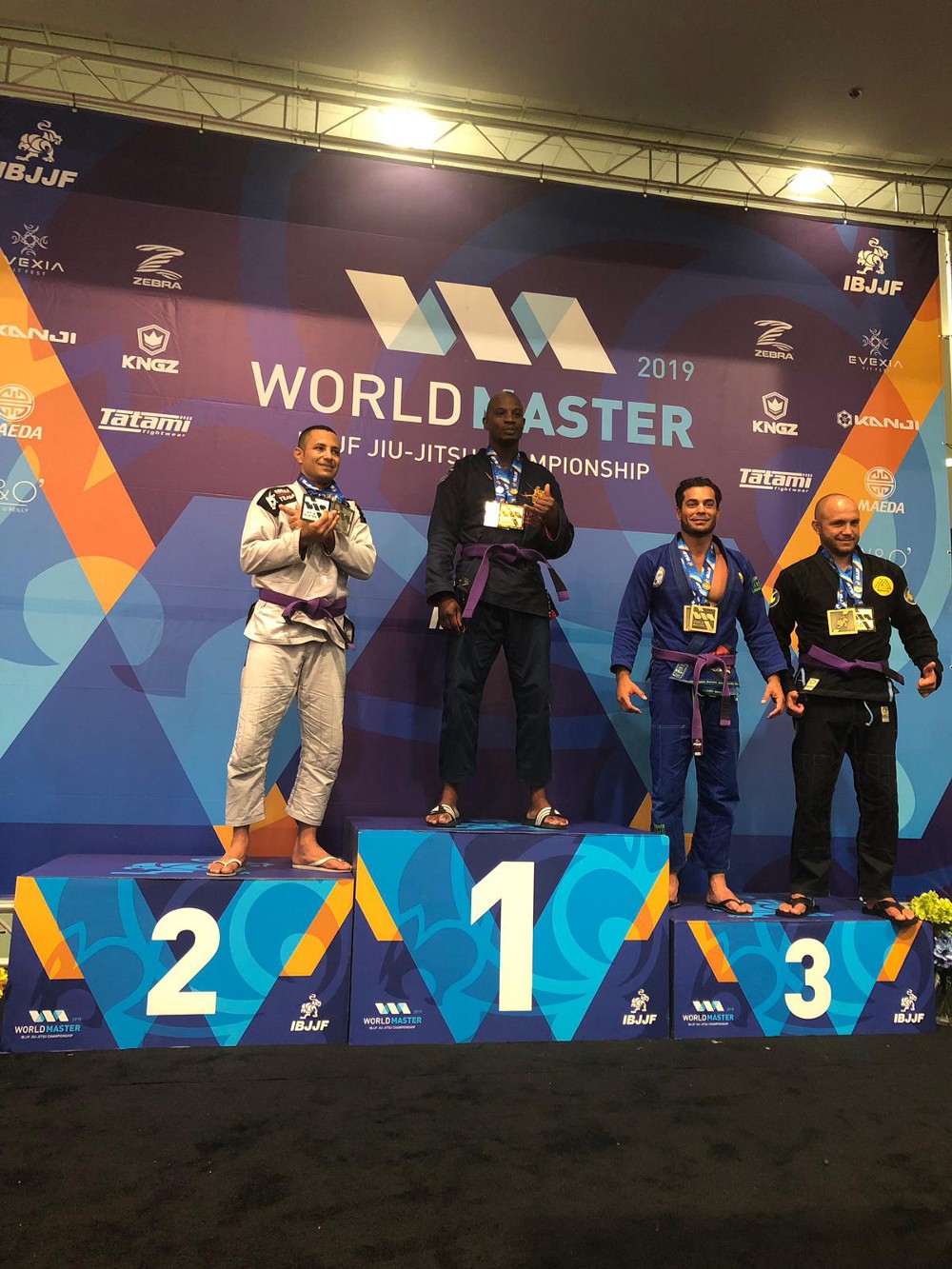
Injury prevention
I've been practicing sports since an early age. I eat and sleep well. I started training GI and NOGI during my first years of BJJ training. I remember experimenting with different guards or positions all the time. This added variability to my training. As found in research, the CLA approach decreases or makes us less susceptible to injuries. I need my hands to work daily. The NOGI training helps with that.
Consistency
When my kids were little, I still trained at least twice a week. That allowed me to keep my head in training. I wasn't making a huge progress but I kept my training habits. My mind never stopped. I probably increased my training visualization.
Training mindset, open mats, and live spiring
Simple motto: Train smart and train hard. What I mean is to make more effective use of my available and limited time to train.
I never enjoyed dead drills. But I still had to do them. I used live sparring to create my specific training, which I believe is the key to learning fast. After reading the book "How we learn to move" by Rob Gray, I realized that I applied a Constraint-Led Approach (CLA) to my live sparing, even without my training partners knowing about it.
In my first year or so, I used to catch up with a friend and train positions for several hours a day. We troubled shooted positions and took it for a test in the gym.
I never miss an open mat session. I am the first to arrive and the last to leave. Live sparring has been the place where I constructed and applied my training style, mostly based on CLA and deliberated practice. I didn't quite know the science behind ecological dynamics but It seems like I was heading in that direction without knowing the underlying method.
How did I create my CLA training in life sparring?
I intended to increase my mileage within specific areas of the game, all in live sparring. For example, when I was refining my triangle attacks, the thing I never did was dead-ass drills. This kind of drilling is a waste of time and energy. It has no action-perception connection. It must be live.
So I started to get into the triangle but not squeeze at all. Hold the triangle 50% or 70% locked and stay there. This gives my opponent time and space to escape in any way they can. It took me no long to identify and anticipate the most common triangle defenses: stacking, head posture, just hold, etc. The other person had no idea of my intentions. Slowly I learned to counter the most common triangle escapes.
I repeated the same process for armbar problems to disconnect their arms. The same for the Lasso guard game development.
Conclusion
Live resistance training, rooted in a Constraint-Led Approach, has been crucial for my accelerated learning curve in BJJ. The continuous evolution of my game plan and the deliberate focus on specific areas during live sparring contributed significantly to my journey.
Tweet to @LeonardoBrAu
